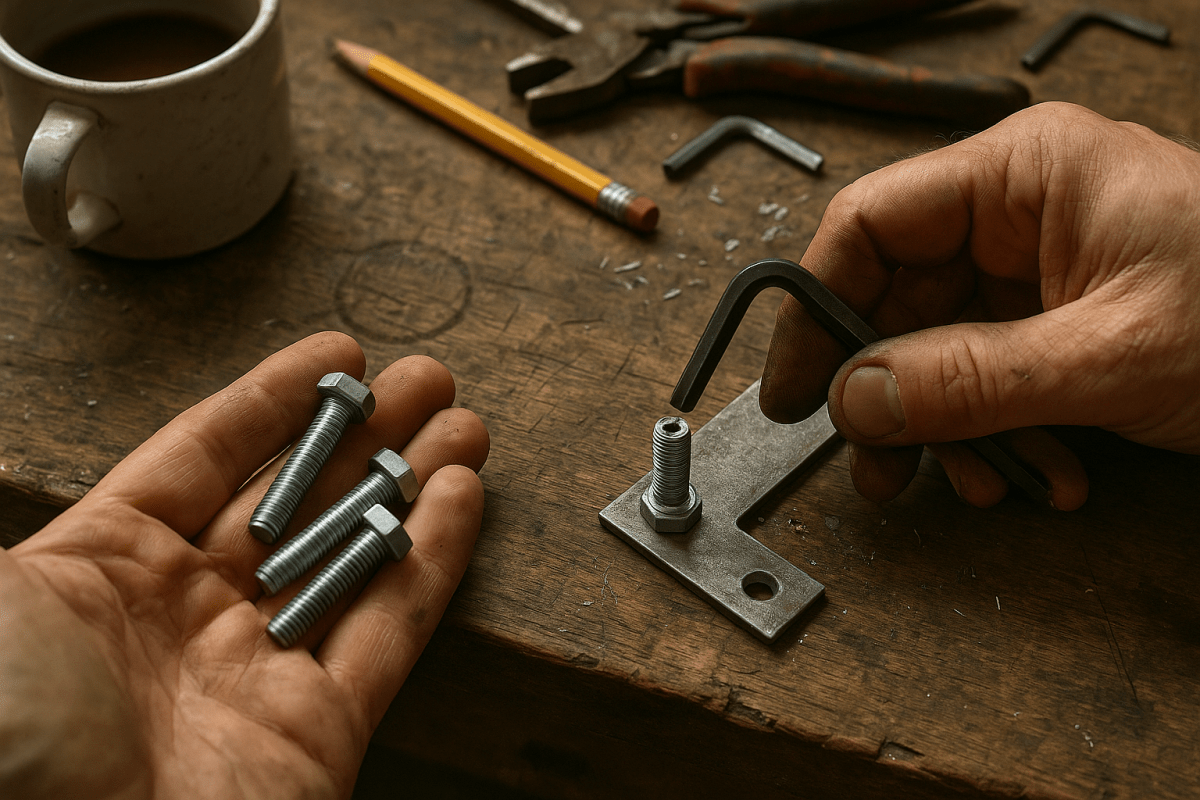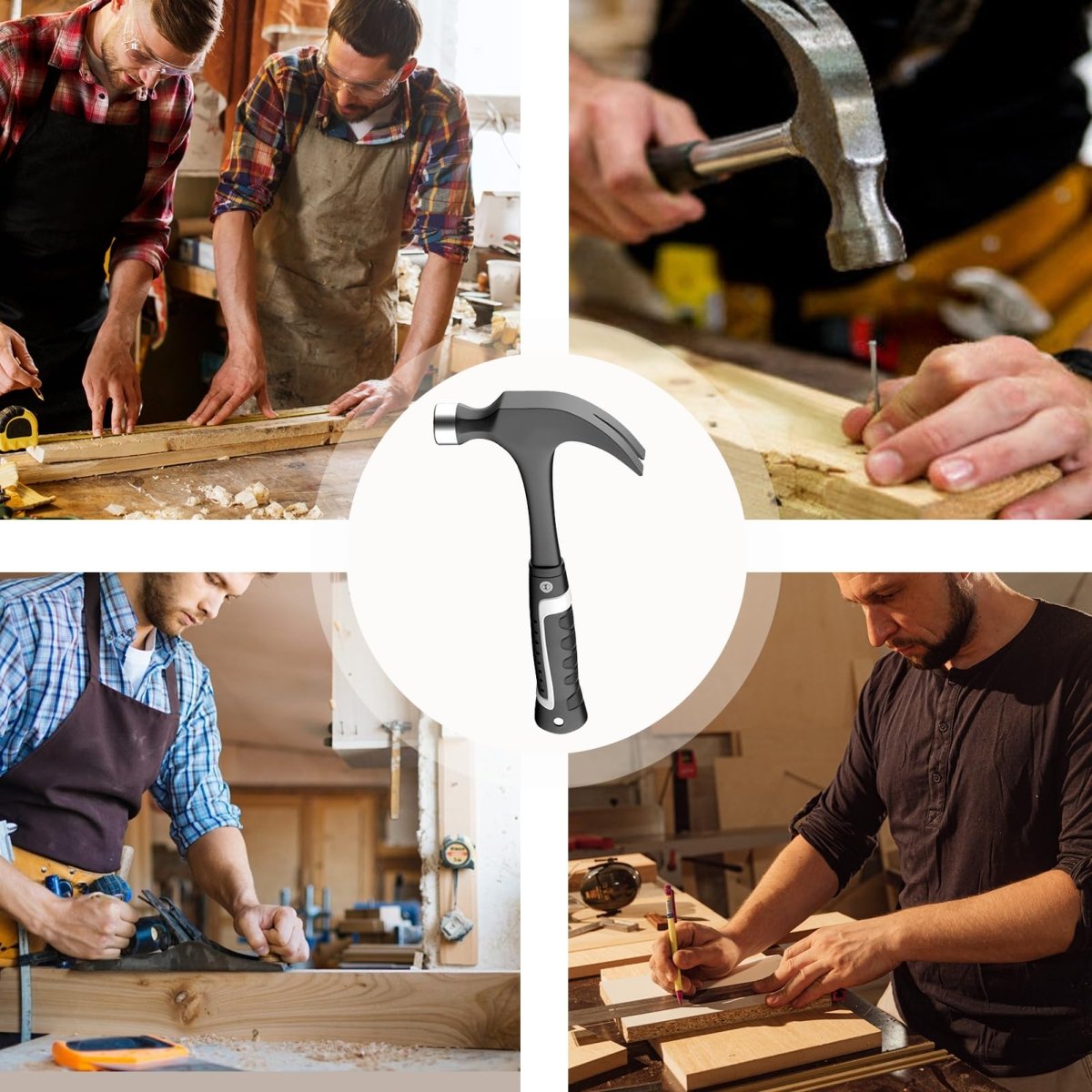Table of Contents
The "M6" Decoded: More Than Just Numbers
When you pick up a bolt stamped "M6," you're holding a key to an entire measurement system. The "M" stands for metric, indicating it follows the ISO metric standard. The number 6 represents the nominal diameter of the bolt's threads in millimeters. But there's more to this designation than meets the eye.
As a hardware specialist who's helped countless DIYers, I've seen how understanding these markings prevents costly mistakes. Last month, a customer damaged his motorcycle engine by forcing an imperial bolt into M6 threads. That $350 repair could have been avoided with proper knowledge of M6 bolts.
Here's what the M6 designation tells you:
- Thread Diameter: 6mm
- Thread Pitch: Typically 1.0mm (standard coarse thread)
- Compatibility: Works with metric nuts and tools
- System: Part of the global ISO standard
Understanding the Metric Fastener System
The metric system originated in France during the 1790s but didn't become the global standard until the mid-20th century. Unlike imperial measurements with fractions, metric uses simple whole numbers that scale predictably:
Metric Advantages
- Decimal-based (easy calculations)
- Consistent scaling (M3, M4, M5, M6, etc.)
- Global standardization
- Simplified tooling (fewer wrench sizes)
Common Metric Sizes
- M3 (3mm)
- M4 (4mm)
- M5 (5mm)
- M6 (6mm)
- M8 (8mm)
- M10 (10mm)
Why M6 Matters
- Most versatile size
- Balances strength & size
- Widely used in machinery
- Perfect for DIY projects
In my hardware career, I've noticed that American DIYers are increasingly preferring metric fasteners, such as our M6 bolt set, because they eliminate confusion with fractional measurements. One customer converted his entire workshop to metric after ruining a project with mismatched imperial bolts.
M6 Bolt Dimensions Explained
While diameter is the headline number, several critical dimensions define an M6 bolt:
| Dimension | Measurement | Tolerance | Notes |
|---|---|---|---|
| Major Diameter | 6mm | ±0.1mm | Outer thread measurement |
| Pitch (Standard) | 1.0mm | - | Distance between threads |
| Pitch (Fine) | 0.75mm | - | Less common variant |
| Head Width | 10mm | ±0.3mm | Hex head measurement |
| Head Height | 3.5-4mm | - | Varies by manufacturer |
| Thread Length | 1.5D min | - | ~9mm for standard bolts |
One critical specification many overlook is thread pitch. While most M6 bolts use the standard 1.0mm pitch, fine-thread versions (0.75mm) exist for precision applications. I helped a robotics enthusiast last month who nearly damaged his prototype by using standard instead of fine-pitch bolts.
M6 vs. Imperial Sizes: The American DIYer's Guide
For those working in imperial measurements, here's how M6 compares to common SAE sizes:
| Imperial Size | Diameter (inches) | Diameter (mm) | Comparison to M6 |
|---|---|---|---|
| #10 | 0.190" | 4.83mm | Smaller than M6 |
| 1/4" | 0.250" | 6.35mm | Larger than M6 |
| M6 Actual | 0.236" | 6.00mm | Standard Metric |
| #12 | 0.216" | 5.49mm | Smaller than M6 |
Last summer, I helped a boat owner repair his deck hardware after he forced 1/4" bolts into M6 fittings. The mismatch stripped the threads, requiring expensive re-tapping. Moral of the story? When working with metric equipment, always use genuine M6 bolts.
Strength Grades & Materials: Beyond the M6 Label
The M6 designation indicates the size, but material and manufacturing determine the strength. Look for these markings on bolt heads:
4.6 Grade
- Low-carbon steel
- Tensile strength: 400 MPa
- General household use
8.8 Grade
- Medium-carbon steel
- Tensile strength: 800 MPa
- Automotive, furniture
10.9 Grade
- Alloy steel
- Tensile strength: 1000 MPa
- Structural applications
A2/A4 Stainless
- Stainless steel
- Corrosion resistant
- Outdoor/marine use
Our M6 bolt and nut set uses Class 8.8 steel - the sweet spot for most DIY applications. This grade provides 800 MPa tensile strength (about 116,000 PSI), sufficient for everything from furniture assembly to automotive repairs.
Where M6 Bolts Excel: Practical Applications
The M6 size hits the sweet spot between strength and versatility. Here's where they shine:
- Furniture Assembly: Bed frames, shelving units, and modular furniture
- Automotive: Engine covers, interior trim, and brake components
- Electronics: Computer cases, server racks, and appliance panels
- Bicycles: Brake mounts, rack attachments, and accessory mounts
- DIY Projects: Custom cabinets, workbenches, and tool modifications
One customer transformed his garage using just M6 bolts: wall-mounted tool panels, workbench reinforcements, and custom storage solutions. The uniformity meant he needed just one wrench size for everything!
Choosing the Right M6 Bolt for Your Project
Selecting the perfect M6 bolt involves more than just the M6 label. Consider these factors:
-
Length Requirements:
- Measure material thickness
- Add space for the washer and nut
- Add 1.5-2 thread pitches beyond the nut
-
Head Type:
- Hex head (maximum torque)
- Button head (low profile)
- Socket head (precision applications)
-
Material:
- Zinc-plated steel (indoor use)
- Stainless steel (outdoor/marine)
- Alloy steel (high-strength needs)
-
Thread Type:
- Full thread (adjustability)
- Partial thread (shear strength)
For most DIYers, our 84-piece M6 bolt set covers 90% of projects with its mix of lengths and complementary nuts/washers.
Proper Installation Techniques for M6 Bolts
Correct installation ensures safety and longevity:
-
Torque Values:
- Steel on steel: 10 Nm (88 in-lb)
- Steel on aluminum: 7 Nm (62 in-lb)
- Stainless on stainless: 8 Nm (71 in-lb)
- Thread Engagement: Minimum 1x diameter (6mm)
- Lubrication: Anti-seize for stainless, light oil for steel
- Washer Use: Always under the nut, sometimes under the head
- Preload: 75-80% of yield strength for critical joints
Frequently Asked Questions
Is M6 the same as 6mm?
Essentially yes - M6 indicates a 6mm diameter metric thread. However, "M6" specifies the entire standardized system, including pitch and tolerances, not just diameter.
What size wrench for an M6 bolt?
Standard M6 hex heads require a 10mm wrench. Some low-profile heads may use 8mm. Our M6 set includes standard 10mm hex bolts.
How much weight can an M6 bolt hold?
An M6 Class 8.8 bolt can support approximately 1,000-1,200 kg (2,200-2,650 lbs) in tension. Shear strength is typically 60-70% of tensile strength. Always consult engineering specifications for critical applications.
Can I use M6 bolts in wood?
Yes, but use coarse-threaded bolts specifically designed for wood (often called "lag bolts" or "coach screws"). Standard machine threads won't grip effectively in wood fibers.
What drill bit for an M6 bolt?
For through holes: 6.5mm
For tapped holes: 5.0mm (coarse thread) or 5.25mm (fine thread)
Always test on scrap material first!
The M6 Advantage: Why This Metric Marvel Belongs in Your Toolbox
Understanding the M6 designation transforms how you approach projects. As we've explored, these six millimeters represent an entire system of precision engineering that offers:
- Global compatibility with metric equipment
- Superior strength-to-size ratio
- Simplified tool requirements
- Consistent sizing across manufacturers
- Versatility for countless applications
At Home DIYer, we've curated the perfect 84-piece M6 bolt and nut set for American workshops. With lengths from 12mm to 50mm, Class 8.8 zinc-plated steel, and complementary washers and nuts, this kit ensures you'll always have the right fastener for any project. Don't let mismatched bolts derail your next DIY adventure!








